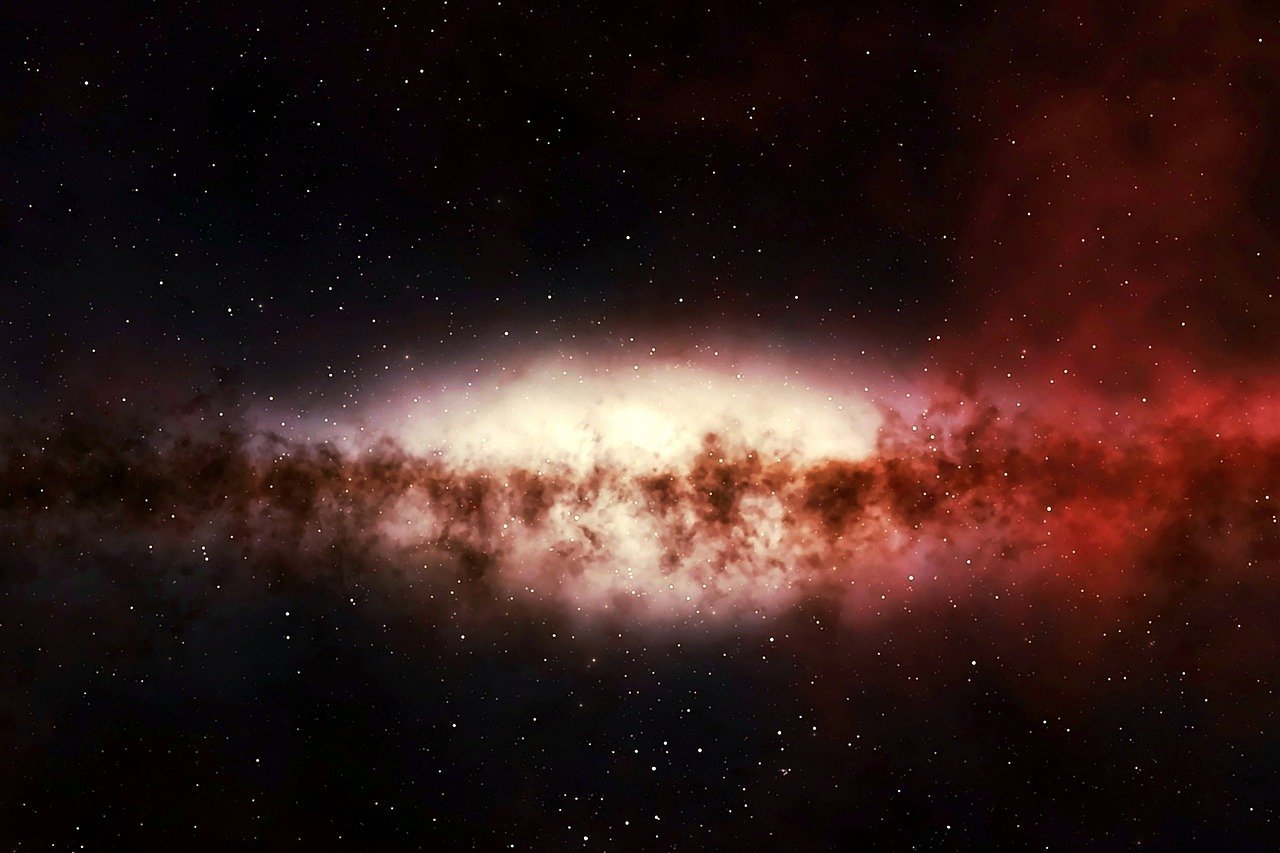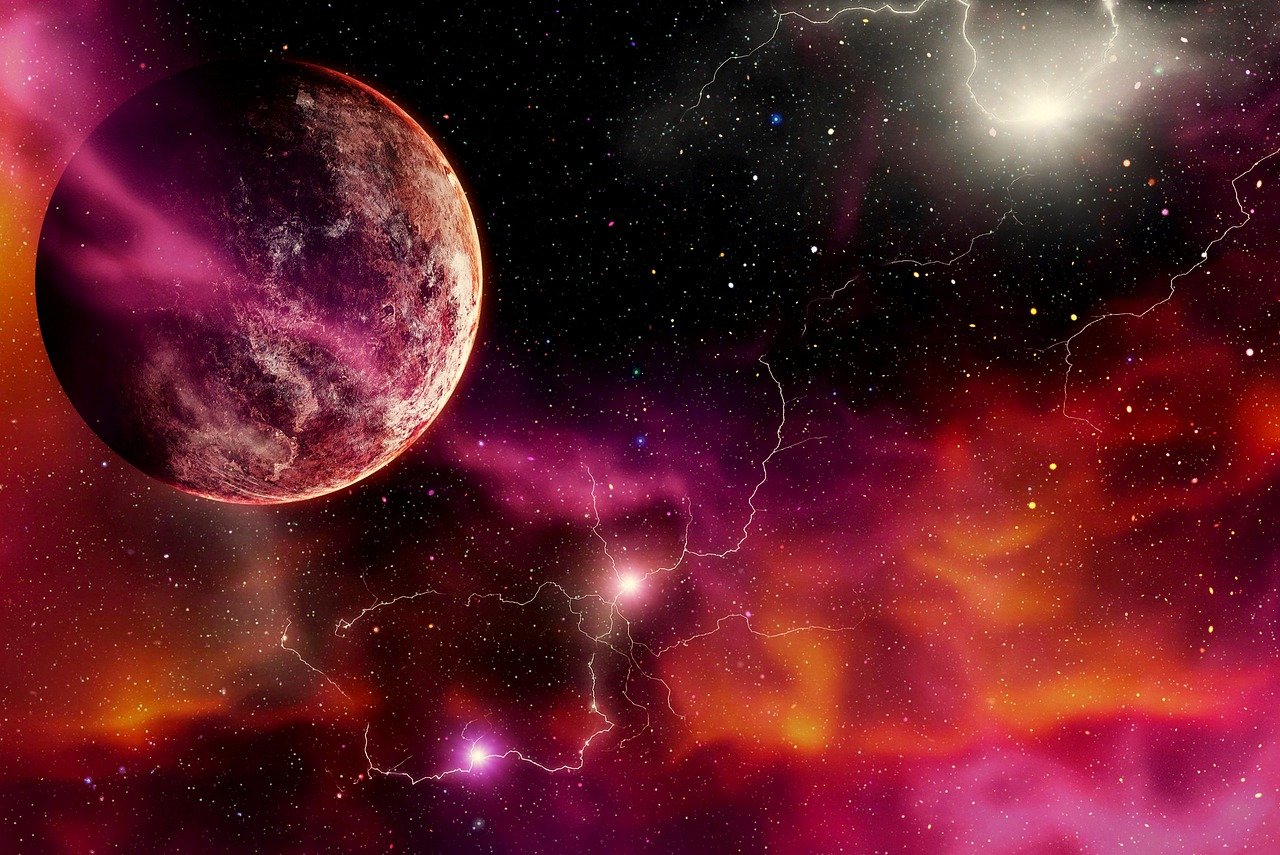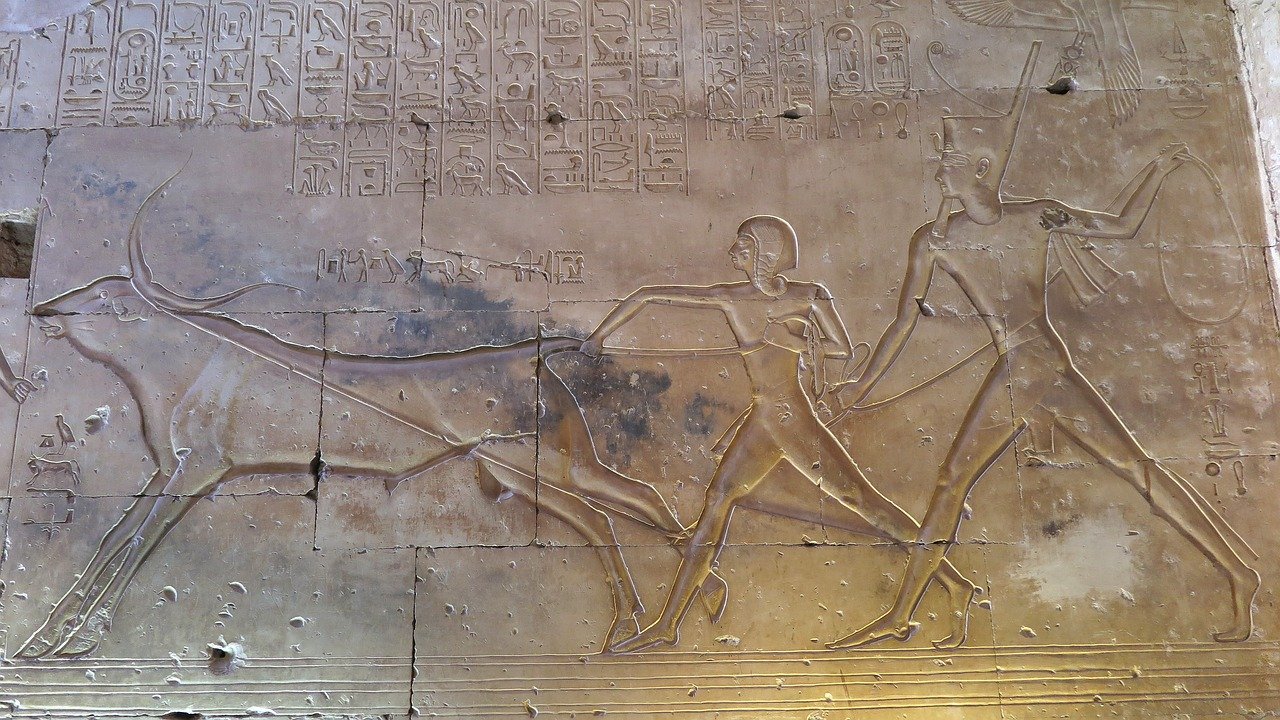In “The Origins of the Universe: Exploring the Basics of Cosmology,” you will embark on a fascinating journey to unravel the mysteries of the cosmos. Delve into the vast expanse of space and time as you learn about the Big Bang theory, the formation of galaxies, and the evolution of stars. Discover how scientists piece together the puzzle of our universe, and gain a deeper understanding of the fundamental principles that govern its existence. Join us as we explore the wonders of cosmology and uncover the secrets hidden in the depths of space.

The Big Bang Theory
Introduction to the Big Bang Theory
The Big Bang Theory is the prevailing cosmological model that explains the origins of the universe. According to this theory, the universe began as a singularity, a state of infinite density and temperature, approximately 13.8 billion years ago. From this incredibly small and hot point, the universe rapidly expanded and continues to expand to this day.
Evidence for the Big Bang Theory
Numerous pieces of evidence support the Big Bang Theory and provide a compelling case for its validity. One key piece of evidence is the observation of the redshift in the light from distant galaxies. This redshift is a result of the expansion of the universe and is consistent with the predictions made by the theory.
Additionally, the abundance of light elements in the universe, such as hydrogen and helium, aligns with the predictions of the Big Bang Theory. The theory accurately explains the ratios of these elements, which can be observed in stars and interstellar gas clouds.
The Expansion of the Universe
The expansion of the universe is a fundamental concept in the Big Bang Theory. Scientists have measured the rate of this expansion using various methods, such as observing the distance between galaxies or studying the fluctuations in temperature in the cosmic microwave background radiation. These measurements have confirmed that the universe is not only expanding but also expanding at an accelerating rate.
The Cosmic Microwave Background
The cosmic microwave background (CMB) is another piece of evidence supporting the Big Bang Theory. This faint radiation, which permeates the entire universe, is a remnant of the early hot and dense state. The CMB provides valuable information about the universe’s initial conditions and has been studied extensively to understand the universe’s evolution and structure.
Formation of Stars and Galaxies
Formation of the First Stars
After the Big Bang, the universe gradually cooled down, allowing matter to condense and form the first stars. These stars were crucial in shaping the future of the cosmos, as they produced heavy elements through nuclear fusion and eventually went supernova, scattering these elements throughout space.
Birth of Galaxies
As the universe continued to evolve, the first stars and their remnants collapsed under their gravity, forming galaxies. The gravitational interactions between these galaxies caused them to merge and become the structures we observe today. This process of galaxy formation continues to shape the structure of the universe.
The Hubble Sequence
The Hubble Sequence, named after the famous astronomer Edwin Hubble, categorizes galaxies based on their visual appearance. It classifies galaxies into three main types: elliptical, spiral, and irregular. Each category represents a different stage of galactic evolution and provides insights into the diverse nature of the universe.
Supermassive Black Holes
Supermassive black holes are intriguing cosmic entities that reside at the centers of most galaxies, including our Milky Way. While their exact formation mechanism is still not fully understood, it is believed that these black holes grow through the accretion of surrounding matter and mergers with other black holes. Their immense gravitational pull plays a vital role in shaping the galaxies in which they reside.

Dark Matter and Dark Energy
Introduction to Dark Matter and Dark Energy
Dark matter and dark energy are two mysterious components that make up the majority of our universe’s mass and energy, but cannot be directly observed. Dark matter’s existence is inferred through its gravitational effects on visible matter, while dark energy is believed to be responsible for the accelerated expansion of the universe.
Observational Evidence for Dark Matter
Various observations, including the rotational speeds of galaxies and the gravitational lensing effect, provide strong evidence for the existence of dark matter. These observations suggest that there is more mass in the universe than can be accounted for by visible matter alone. Dark matter is thought to play a crucial role in the formation and evolution of galaxies.
Theoretical Explanations for Dark Matter
While the nature of dark matter remains a mystery, scientists have proposed several theories to explain its existence. One prominent theory suggests that dark matter consists of yet-undetected particles, such as weakly interacting massive particles (WIMPs). These particles would interact only weakly with ordinary matter, making them difficult to detect directly.
The Accelerating Universe
The discovery of the accelerated expansion of the universe, attributed to dark energy, was a significant breakthrough in cosmology. This observation came as a surprise to scientists and challenged previous beliefs about the universe’s fate. The accelerating universe implies that dark energy is constantly pushing galaxies apart and is responsible for the universe’s ultimate destiny.
Inflationary Cosmology
The Big Bang and Inflation
Inflationary cosmology proposes that the universe underwent a rapid expansion, known as cosmic inflation, in its early stages. This period of rapid expansion occurred a fraction of a second after the Big Bang and resolved several puzzles in cosmology, such as the uniformity of the cosmic microwave background.
Quantum Fluctuations
Quantum fluctuations, small variations in energy and matter on microscopic scales, played a crucial role during cosmic inflation. These fluctuations eventually gave rise to density inhomogeneities, which served as the seeds for the formation of galaxies and large-scale structures in the universe.
Cosmic Inflation
Cosmic inflation is a short but significant phase in the early universe that lasted for a fraction of a second. This exponential expansion smoothed out irregularities and created a nearly uniform universe. It also provided an explanation for why the universe appears flat and why distant regions of the sky have the same temperature.
Inflationary Models
Scientists have proposed various models to explain the mechanism of cosmic inflation. These models, such as the chaotic inflation model and the hybrid inflation model, offer different explanations for the cause and dynamics of inflation. While there is still much to uncover about the specifics of inflation, this theory has greatly contributed to our understanding of the early universe.

The Multiverse
The Concept of the Multiverse
The concept of the multiverse suggests the existence of multiple universes, each with its own set of physical laws and properties. This idea, while speculative, arises from various theories in physics and cosmology. Exploring the multiverse allows scientists to consider the possibility of our universe being just one among many.
Many-Worlds Interpretation
The many-worlds interpretation, proposed by physicist Hugh Everett, posits that every quantum event creates a new parallel universe. In this interpretation, each universe contains a different outcome, leading to a branching structure of multiple universes. This idea provides a fascinating perspective on the nature of reality and the potential existence of countless alternate realities.
Bubble Universe Theory
The bubble universe theory suggests the existence of bubble-like universes within a larger multiverse. These bubble universes could have unique properties and physical constants, leading to a vast diversity of possible universes. This theory offers an explanation for the observed fine-tuning of physical laws and constants in our universe.
String Theory and Multiverses
String theory, a theoretical framework aiming to unify quantum mechanics and general relativity, also supports the idea of a multiverse. According to string theory, our universe is part of a vast landscape of possible universes, each representing a different vacuum state. This landscape of string theory provides a framework for understanding the existence of multiple distinct universes.
The Cosmic Web
Cosmic Structure Formation
Cosmic structure formation refers to the process by which galaxies and large-scale structures in the universe form and evolve. It is influenced by the gravitational pull of dark matter, which acts as a scaffolding for the growth of cosmic structures. Over billions of years, this process has given rise to the intricate cosmic web we observe today.
Filaments, Voids, and Clusters
The cosmic web consists of filaments, voids, and clusters that make up the large-scale structure of the universe. Filaments are elongated structures composed of galaxies and gas, forming the “highways” along which matter flows. Voids, on the other hand, are vast regions with a low density of matter. Clusters are dense concentrations of galaxies, interconnected by filaments.
The Great Attractor
The Great Attractor is a mysterious region of space that influences the motion of galaxies in our local vicinity. It exerts a gravitational pull that affects the flow of galaxies in our cosmic neighborhood. The nature of the Great Attractor is still not fully understood, and more research is needed to unravel its exact location and composition.
Large-Scale Simulations
To study the formation and evolution of the cosmic web, scientists rely on large-scale simulations that simulate the complex interactions between dark matter, gas, and galaxies. These simulations utilize supercomputers and advanced algorithms to model the intricate processes occurring on astronomical scales. They provide valuable insights into the growth of cosmic structures throughout the history of the universe.
Cosmic Evolution
Stellar Evolution
Stellar evolution describes the life cycle of stars, from their birth to their eventual death. Stars are born from the gravitational collapse of dense regions of gas and dust, forming protostars. These protostars then undergo nuclear fusion, converting hydrogen into helium and releasing vast amounts of energy. The exact path of stellar evolution depends on the mass of the star, leading to a variety of outcomes, from white dwarfs to neutron stars and black holes.
Galactic Evolution
Galactic evolution refers to the changes that occur within galaxies over time. As galaxies age, they undergo various processes such as star formation, stellar evolution, mergers, and interactions with other galaxies. These processes shape the structure and properties of galaxies, leading to their diverse range of shapes, sizes, and characteristics.
Cosmological Evolution of the Universe
The universe itself has undergone significant evolution since its inception in the Big Bang. From the hot, dense state to the formation of galaxies and the subsequent expansion, the universe has continually changed over billions of years. Understanding this cosmological evolution is a key goal of modern cosmology, as it provides insights into the fundamental nature and fate of our universe.
Cosmic Microwave Background
The cosmic microwave background, mentioned earlier, is an essential component of cosmic evolution. This radiation, left over from the early stages of the universe, offers a snapshot of the universe’s conditions at that time. By studying the patterns and fluctuations in the cosmic microwave background, scientists gain valuable information about the seeds of structure formation and the evolution of the universe.
The Fate of the Universe
Theories on the Fate of the Universe
There are several theories on the ultimate fate of the universe, each with its own implications for the future. These theories depend on factors such as the average density of the universe, the amount of dark matter and dark energy, and the rate of expansion. By studying these factors, cosmologists aim to uncover the destiny that awaits our universe.
Heat Death of the Universe
One possibility for the future of the universe is the heat death scenario. In this scenario, the universe continues to expand and cool, eventually reaching a state of maximum entropy and equilibrium. All energy sources, including stars and black holes, would eventually run out, leading to a uniform, cold, and lifeless universe.
Big Crunch vs. Big Freeze
Another possible fate of the universe depends on the balance between the gravitational pull of matter and the repulsive force of dark energy. If the amount of matter is sufficient, gravity could overcome dark energy, causing the universe to eventually contract in a “Big Crunch.” On the other hand, if dark energy continues to dominate, the universe would expand indefinitely in a “Big Freeze,” resulting in the continued separation of galaxies and ultimately the demise of stars.
The Great Unknown
Despite our advancements in cosmology, much about the fate of the universe remains unknown. The intricate interplay between the various factors influencing cosmic evolution presents ongoing challenges for scientists. By furthering our understanding of dark matter, dark energy, and the fundamental properties of the universe, we may someday unravel the ultimate destiny that awaits our cosmos.
Cosmological Discoveries and Missions
The Hubble Space Telescope
The Hubble Space Telescope has played a pivotal role in revolutionizing our understanding of the cosmos. Its remarkable observations have provided breathtaking images of distant galaxies, revealing the vastness and beauty of our universe. The Hubble Space Telescope has also contributed to measurements of the cosmic microwave background radiation, offering further insights into the early universe.
WMAP and Planck Missions
The Wilkinson Microwave Anisotropy Probe (WMAP) and the European Space Agency’s Planck mission were dedicated to studying the cosmic microwave background radiation. These missions provided unprecedented measurements of the temperature and fluctuations in the CMB, enabling scientists to refine our understanding of the universe’s early moments and its evolution.
Cosmic Microwave Background Explorer
The Cosmic Microwave Background Explorer (COBE) was a mission specifically designed to study the cosmic microwave background radiation. It made crucial discoveries, including the detection of tiny temperature variations in the CMB. These findings supported the Big Bang Theory and solidified the understanding of cosmic evolution.
Future Space Missions
The field of cosmology continues to advance, driven by technological breakthroughs and scientific curiosity. Future space missions, such as the James Webb Space Telescope and the Large Synoptic Survey Telescope, will expand our knowledge of the universe. These missions will enable us to study the formation of stars, explore the nature of dark matter and dark energy, and delve deeper into the mysteries of our cosmic origins.
The Role of Cosmology Today
Cosmology’s Impact on Physics
Cosmology and physics are deeply intertwined, as the study of the universe’s origins and evolution provides valuable insights into fundamental physics. Cosmological theories have influenced our understanding of particle physics, quantum mechanics, and theories of gravity. Likewise, breakthroughs in physics often lead to advancements in cosmology, bringing us closer to a unified understanding of the universe.
Understanding the Early Universe
One of the key goals of cosmology is to understand the conditions and events that occurred in the early universe. Through the study of the cosmic microwave background, the formation of the first stars and galaxies, and the exploration of inflationary cosmology, scientists are piecing together a comprehensive picture of the universe’s infancy. This knowledge not only satisfies our innate curiosity but also guides our understanding of the universe’s subsequent evolution.
Searching for Life in the Universe
Cosmology also intersects with the search for extraterrestrial life. By studying the conditions necessary for life on Earth and exploring the potential habitable environments in the universe, cosmologists contribute to our understanding of the possibility of life beyond our planet. The field of astrobiology, which combines insights from cosmology, biology, and other disciplines, aims to unlock the mysteries of life’s origins and its potential existence elsewhere in the cosmos.
Technological Advances
The pursuit of cosmological knowledge has driven numerous technological advancements. From space telescopes and detectors to supercomputers and data analysis techniques, the tools developed for cosmology have found applications in various fields. These technological innovations not only enhance our understanding of the universe but also benefit society through advancements in imaging, data processing, and scientific discovery.
In conclusion, cosmology is a vibrant and ever-evolving field that explores the origins, evolution, and future of our universe. The Big Bang Theory, supported by a wealth of evidence, provides a strong foundation for our understanding of the universe’s birth. From the formation of stars and galaxies to the mysteries of dark matter and dark energy, cosmology continues to unravel the complexities of our vast cosmos. With advancements in technology and ongoing scientific inquiry, we are moving closer to unraveling the ultimate fate of the universe and expanding our collective understanding of the cosmos.